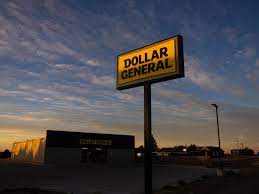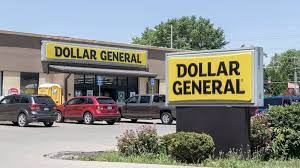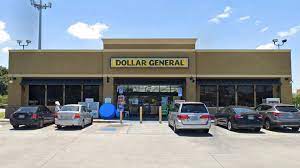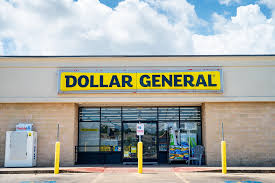Introduction
Dollar General, one of the largest discount retailers in the United States, recently made headlines with its announcement of major store closures across various regions. This move signals a significant strategic shift for the company, which has grown rapidly over the past decades by targeting rural and suburban communities with affordable everyday products. The store closures have sparked discussions among consumers, investors, and retail experts, raising questions about the reasons behind the decision and its impact on shoppers and the broader retail landscape.
This article explores the factors driving Dollar General’s decision to close numerous stores, how this strategy aligns with evolving market conditions, and what the future holds for the retailer and its customers. We will also examine how the company plans to adapt and remain competitive in a changing retail environment.
Dollar General’s Growth Trajectory
Founded in 1939, Dollar General has become synonymous with budget-friendly shopping. The company’s core business model revolves around operating small-format stores that provide essential products at low prices, primarily targeting underserved rural and suburban markets. This strategy allowed Dollar General to expand rapidly, especially in areas where larger retailers had little presence.
By 2024, Dollar General had established nearly 20,000 stores across 46 states, becoming one of the most widespread discount retailers in the country. This vast network enabled the company to serve millions of customers who rely on it for daily essentials, from groceries and household goods to health and beauty products.
The Rationale Behind Major Store Closures
Despite its rapid growth, Dollar General’s announcement of over 140 store closures represents a recalibration of its business strategy. Several key factors explain why the company has chosen this path:
1. Market Saturation and Store Overlap
As Dollar General aggressively expanded, some markets experienced saturation, with multiple stores operating within close proximity. This oversaturation led to cannibalization of sales, reducing profitability per location. Closing underperforming or overlapping stores allows Dollar General to optimize its footprint and concentrate resources on high-performing locations.
2. Changing Consumer Preferences
Today’s consumers demand more than low prices; they seek convenience, product variety, and digital integration. While Dollar General’s smaller stores have been effective in providing basic needs, they sometimes fall short in meeting modern expectations for shopping experience and product assortment, particularly in urban and suburban areas where competition is fierce.
3. Increased Competition
The discount retail sector is highly competitive, with Walmart, Target, Amazon, and other dollar store chains like Family Dollar and Dollar Tree vying for market share. These competitors offer larger store formats, more extensive product ranges, and advanced e-commerce platforms, challenging Dollar General’s traditional business model.
4. Underperformance of New Concepts
Dollar General’s venture into new retail concepts, notably the Popshelf stores designed to attract younger and more urban shoppers, has not yielded the expected growth. The decision to close multiple Popshelf locations reflects a strategic retreat to focus on the core Dollar General brand and markets.

Geographic and Demographic Impact of Closures
The store closures predominantly affect urban and suburban markets where competition is intense and consumer expectations are higher. However, many rural and small-town Dollar General stores remain operational, as these locations continue to serve as vital access points for affordable goods.
The closures in urban areas suggest a strategic move to avoid direct competition with larger retailers and e-commerce platforms, instead focusing on areas where Dollar General has a competitive advantage.
What Store Closures Mean for Customers
Access to Affordable Goods
For many customers, especially those in rural communities, Dollar General stores are essential sources of affordable groceries and household items. Store closures may create challenges by increasing travel distances to the nearest store, potentially impacting seniors, low-income families, and individuals with limited transportation.
Improved Store Experience at Remaining Locations
While some customers face the inconvenience of store closures, Dollar General’s strategic shift allows the company to invest more in its remaining stores. These investments include store remodels, improved product selection, and enhanced customer service aimed at delivering a better shopping experience.
Digital and Omnichannel Expansion
Dollar General is accelerating its digital transformation, expanding features such as the DG GO! mobile app for contactless checkout, personalized digital coupons, and online shopping options with same-day delivery in select markets. These digital initiatives aim to complement physical stores and offer customers more convenience.
Strategic Focus: What’s Next for Dollar General?
Concentration on Core Markets
Dollar General’s renewed focus on rural and suburban areas where it holds a strong competitive position indicates a return to its roots. By reinforcing its presence in these markets, the company can leverage its brand loyalty and provide value where it matters most.
Store Remodels and Modernization
Significant investments are planned for remodeling existing stores to incorporate fresh food sections, health and wellness products, and an overall enhanced shopping environment. These upgrades reflect efforts to meet evolving consumer preferences while maintaining affordability.
Strengthening Supply Chain and Logistics
To support its strategy, Dollar General is improving its supply chain and distribution networks to ensure efficient inventory management and quicker restocking. This operational efficiency is crucial to maintaining low prices and product availability.
Innovation and Product Expansion
Beyond store formats, Dollar General is expanding its private-label offerings and introducing new product lines, including organic and natural goods, to appeal to a broader customer base and respond to health-conscious trends.
Industry Expert Insights
Retail analysts view Dollar General’s store closures as a necessary adjustment in a highly competitive sector. Experts suggest that focusing on profitability over sheer store count is a sustainable approach, allowing the company to remain agile and customer-focused.
While closures can signal challenges, they also offer opportunities for renewal and innovation, enabling Dollar General to align its operations with future market demands.

Investor Reactions and Financial Implications
Dollar General’s announcement initially triggered mixed reactions in the stock market. Some investors expressed concern about potential revenue losses from the closed stores, while others appreciated the focus on long-term profitability and operational efficiency.
The company’s outlook suggests confidence that these closures will improve overall margins, increase same-store sales, and enhance shareholder value in the years to come.
The Bigger Picture: Retail Industry Trends and Lessons
Dollar General’s strategic shift is emblematic of broader trends in the retail industry, where companies are balancing expansion with operational efficiency. As consumer habits evolve—accelerated by technological adoption and pandemic-induced changes—retailers must innovate and adapt or risk losing relevance.
Store closures, while difficult, can pave the way for more resilient business models focused on delivering quality, convenience, and value.

Conclusion
Dollar General’s major store closures reflect a thoughtful and strategic realignment rather than mere downsizing. By pruning underperforming stores, doubling down on core markets, and embracing modernization and digital innovation, Dollar General is positioning itself for sustainable growth in a dynamic retail landscape.
For customers, this means a mixed experience: some will face store closures and travel challenges, while many others will benefit from improved stores and enhanced services. For communities, especially rural ones, Dollar General’s commitment remains strong, promising continued access to affordable essentials.
As Dollar General navigates this transformation, its success will hinge on balancing affordability with innovation—a challenge that will define the future of discount retailing in America.







